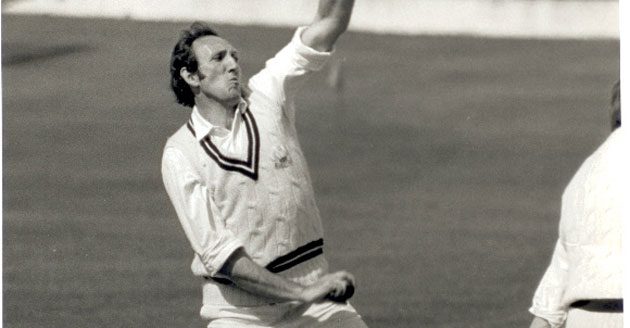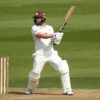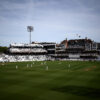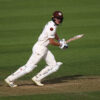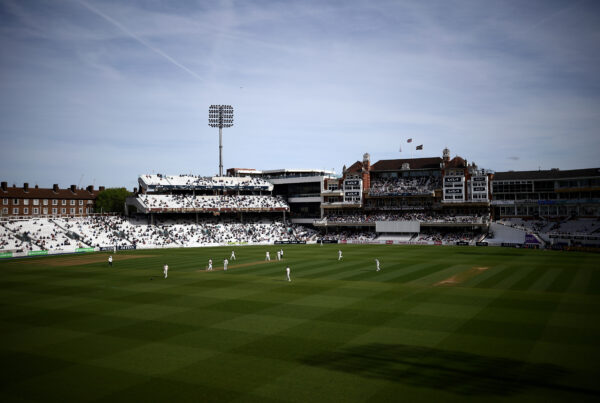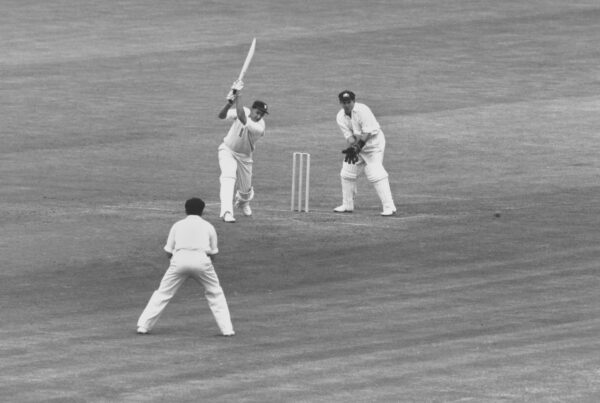When England embark on their Test series against India this week, it will be a chance for Rory Burns, Ben Foakes and Ollie Pope to write new chapters in their careers.
Richard Spiller will look back to the experiences of four Surrey predecessors – Douglas Jardine, Micky Stewart, Geoff Arnold and Mark Butcher – on previous tours over the next month. After Jardine & Stewart in recent weeks, he continues today with Geoff Arnold.
1972-73: First Test, New Delhi
A master of English conditions, Geoff Arnold’s wickets had spearheaded Surrey’s attack when the won the 1971 County Championship and 12 months later helped England retain the Ashes. But he did not expect to find Indian pitches offering him any assistance in the opening match of the series at the Ferozsha Kotla.
GA: This one did. There wasn’t a blade of grass and it was a grey colour but it was damp. The ball seamed and kept making indentations.
A spell of 3-9 in 19 balls chopped the head off the Indian batting – which included having kingpin Sunil Gavaskar (12) caught by Tony Greig at second slip and bowling captain Ajit Wadekar (3) – was followed by returning to bowl Dilip Sardesi (12) and Arnold polished off the hosts for 173 as he finished with 6-45 from 23.4 overs, which were to remain his best figures over 34 Tests.
England were fielding a much-changed side from the one which had finished the previous summer at The Oval, skipper Ray Illingworth taking the winter off as did other senior players including John Snow, John Edrich and Geoffrey Boycott. The tourists embarked on a five-Test series against India plus three more in Pakistan led by Glamorgan’s Tony Lewis, a party which included Arnold’s Surrey colleagues Pat Pocock – his first international outing for four years, kept out by fellow off-spinner Illingworth – and Graham Roope, who would make his debut later in the series at Kanpur.
GA: We didn’t get ‘rotated’, as they do now. You wanted to play every game you could.
Having lost to India in 1971, Wadekar’s men snatching the series with a historic first win on English soil at The Oval, the tourists were aware their greatest test would be countering the home spinners.
GA: They were brilliant. Abid Ali and Solkar would bowl two or three each to get the shine off the ball and then you were up against Bedi, Chandrasekhar and either Prasanna or Venkat.
Opener Dennis Amiss (46) and a stirling unbeaten 68 by Tony Greig, taking him 242 balls and using his 6ft 7in reach to the full, eked out a modest lead of 27, wrist-spinner Bhagwath Chandrasekhar’s 8-79 in 41.5 overs backed up by left-armer Bishan Bedi’s 2-59 from 47.
England had taken four of their own spinners and now they relished conditions, Derek Underwood (4-56) and Pocock (3-72) seeing their efforts augmented by three more wickets for Arnold in bowling out the home side for 233 second time round.
Needing 207, the tourists were a nervy 106-3 going into the fifth and final day – which just happened to be Christmas Day – and lost Barry Wood (45) straightaway. But Lewis, making his international debut at the age of 34, teamed up with Greig (40no) to knock off the runs, finishing with an unbeaten 70 to round off victory by six wickets.
GA: Tony Lewis had scored runs against spin the previous summer and I think that’s why he got the job for that tour. Winning on Christmas Day was a bit different. We didn’t have our families with us and some people even disapproved of them coming out to Australia a couple of years later. Eight Tests in a few days over three months was quite a busy schedule.
I can still remember my Christmas lunch – pork luncheon meat sandwiches.
Maybe they were the reason why Arnold had to sit out the next Test at Calcutta, which started five days later, with a sickness bug.
His absence was a blow, Lewis’s men losing by 28 runs, and on returning he could not stop India winning the third match by four wickets. The last two were drawn, as were all three in Pakistan.
